- Strataglass Overview
- Strataglass Advantages
- Fabrication Guidelines and Tips
- Care & Maintenance
- Boat Buying Guide
- CrystalClear Overview
- CrystalClear Advantages
- PanoramaFR Overview
- PanoramaFR Advantages
- Authorized Distributors
- Authorized Fabricators
- Warranty Information
- Warranty Registration

Explaining the Different Types of Marine Window Material
Taking proper care of your boat keeps it seaworthy for longer. Choosing the right materials for your marine windows is one important choice boat owners need to make to do just that.
Typically, boat windows are made from specialty textiles rather than glass . These textiles are designed to withstand everything the open water throws at them. Several different kinds of clear textiles are available today and knowing your marine window material options helps you ensure you’re getting the right product for your needs.
[To Learn More About Strataglass Marine Vinyl, Contact Us Today]
Here’s a quick look at the most popular marine window materials on the market today:
- Vinyl and Polyester Composite: An excellent composite material, vinyl and polyester composite fabrics offers the flexibility you need to curve and bend along a boat’s contours easily. Fabrics made using this composite stay tight against the frame and provide waterproof and mildew resistance. Herculite Inc. offers this composite combination in two top quality marine grade fabrics: Riviera and Regatta .
- Clear Pressed Polished Coated Vinyl : A popular choice for everyday marine use, clear pressed polished coated vinyl can be rolled back easily, which is great for boat tops. Herculite’s Strataglass is one of the top brands on the market for this versatile material. Another reason for the popularity of this material it is available with scratch-resistant special coatings, which extend the life of the material considerably. Strataglass is one such example of a material that offers such a coating: VueShield .
- Polycarbonate: Made from a semi-rigid clear plastic, polycarbonate windows are widely considered to be nearly unbreakable. With polycarbonate, user visibility is clearer that other clear plastics, plus it can be coated with scratch and UV resistant coatings for additional protection. Polycarbonate is an excellent choice for rugged uses. However, this textile isn’t soft like clear vinyl so it can’t be rolled up for storage. It also tends to be pricey.
- Acrylic: Like polycarbonate, acrylic panels are semi-rigid and provide excellent visibility. Acrylic panels are very difficult to break, making them an excellent choice for rugged marine use. However, acrylic fabric windows can be scratched easier than some other options, and the panels can’t be rolled up for storage. Acrylic can also be expensive, so it’s best used sparingly.
When it comes to marine vinyl window materials, remember to consider the cost of each material and how that relates to its longevity. Some materials will last longer than others, which make their additional cost make sense over than cheaper materials that will require frequent replacement. Alternately, if you can maintain a more affordable and versatile fabric like polycarbonate or a clear polished pressed vinyl properly over time, why not choose the more cost effective solution (and get benefits like a roll up window?) How you use your boat and what your needs are will dictate which material is best for you.
One final note: remember that the gauge (a.k.a. thickness) of your windows affects how it will look, as well as its clarity and flexibility. Some marine window materials come in gauges as thick as 40 gauge and as thin as 12 gauge. Before you buy, check out this quick buying guide on marine window materials to make sure you’re getting the perfect choice for your needs.
To Learn More About Strataglass Marine Vinyl, Contact Us Today!

- Fabrication Tips
- Fabricators
- Distributors
Toll-Free 800.772.0036
Office 2968 Ravenswood Rd, #107 Fort Lauderdale, FL 33312

© Copyright 2023 Strataglass, LLC. All Rights Reserved.
Proud Member of ATA & MFA .
Privacy Policy | Terms & Conditions

Window Material
We sell 3 types of clear vinyl window material. Our "roll vinyl" is least expensive but flexible and is available in 20 gauge and 30 gauge thickness. In our canvas shop, we use 20 gauge for porch enclosures and 30 gauge for enclosures on small run-abouts and pontoon boats. Crystal Clear is roll vinyl that has been pressed and polished for better clarity. Strataglass goes one step further with a polymer coating which makes this "glass" more resistitant to scratches and UV damage. Both Crystal Clear and Strataglass are available in a thickness of 40 gauge and are flexible enough for roll-up "smiles" on enclosures.

Strataglass™

Crystal Clear™

Partial Sheet, Strataglass® & Crystal Clear®

Clear Roll Vinyl

Submit your email address for special promotions and offers.

What’s The Best Type Of Material For Aftermarket Boat Windshields?
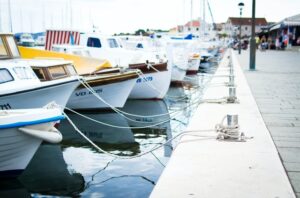
Not all boat windshields are built the same way. Some feature materials that are sturdier than others in certain applications. That means you can’t choose a one-size-fits-all windshield, because they might fail for a job they’re not made for. So let’s sail on and take a look at the most common materials used for aftermarket boat windshields.
Related: DIY Boat Restoration in 5 Easy Steps
Types Of Materials
There are three basic types of materials used for marine window or windshield. Here’s a quick look at each of them:
- Acrylic: This type of marine window isn’t made of glass, but with a special type of plastic. Also known as “organic glass,” acrylic is a semi-rigid window option. That means you can bend it to a certain degree without breaking. This is one of the most commonly used materials in marine application s , for reasons that will be explained further.
- Glass: This is a bit closer to windows in homes that people are more familiar with. It’s another popular choice for use on custom boat windshields, mainly due to their versatility.
- Polycarbonate: This is made from a semi-rigid clear plastic that is durable enough to be considered unbreakable. It can withstand far more punishment on the water than almost anything else, but that comes at a price.
What Are The Advantages Of Each?
As previously discussed, each aftermarket boat windshield or window material has its own advantages. Read on to learn more about what each material can do, and when they’re best applied.
- Acrylic is much like polycarbonate because it’s semi-rigid. Again, this allows for a certain degree of bending, which makes it great for following a boat’s contours. As you may know, boats don’t always have straight lines. Going for an acrylic windowpane will make installing windows easier. Another thing about acrylic is it’s also incredibly durable. They’re very strong; strong enough in fact that they’re hard to break. This makes them perfect for rugged environments, like the open ocean. Lastly, acrylic is naturally UV resistant, so there’s no need for extra coating to protect yourself from harmful UV rays.
- Glass is easier to find, and sometimes even cheaper than non-glass alternatives. Many praise glass for its overall versatility, because you can install it anywhere on a boat. Side windows, deck windows, even on the bridge – it doesn’t matter. There is always a glass option for every specific installation location on a boat. And since glass can also be custom-shaped, you don’t have to bend it. You can have it custom-ordered to fit a specific boat model, and nothing else.
- Polycarbonate is a type of clear plastic that is unbreakable. If you want windows that can withstand anything short of a bullet, this is the material to go for. It also offers the best visibility, which makes them ideal for windows in the first place. Because what is the purpose of a window if you can’t see out of it anyway? Not to mention, you can also coat it with UV-resistant and scratch-resistant film for added protection.
Coated Or Uncoated?
Windows and windshields are prone to getting scratched. They’re also vulnerable to letting UV rays in, as previously stated. As such, mariners also have the choice to go for either coated or uncoated windows.
Technology is advanced enough now that coated windows are often the best options out there. The fact that these windows are coated means they’re protected from a wide variety of issues. A huge one of which is scratching. Imagine this: how can you enjoy the outside scenery if you have to look through scratches? With the right coating, scratches will never be a problem.
But perhaps the biggest issue with uncoated boat windshields/windows is protection from the sun. When sailing, you’re at the mercy of its rays. UV rays, to be specific. And not only could it damage your skin, but also the windows. In fact, clear plastic surfaces are very much prone to UV ray damage. The sun evaporates the surface’s plasticizers, which makes them brittle. And if the surface becomes brittle, then it can break.
Which One Should You Go For?
Despite all of this information, there’s only one thing certain at the end of the day. It’s your choice! If you own a boat, it is up to you to determine what works well for it and what doesn’t. That also applies to choosing the right aftermarket boat windshields and windows. Consider your needs and wants against cost, durability, and longevity, and you might have just done yourself a favor. It’s really that simple.
Related: Do’s & Don’ts: DIY Replacing Boat Windshields
We Can Help You With Your Custom Boat Windshield Needs !
If you’re still confused about which material for your windshield to pick, we can help you out. Here at Peninsula Glass , we fabricate flat glass boat windshields and have several of the best professionals in the business ready to answer your every query. Talk to us today!
Recent Posts
- The Complete Guide to Van Window Replacement
- Custom Boat Windows: Enhancing Your Vessel with Precision and Style
- Custom Replacement Glass for RV, Boat, & Van Windows
- Navigating the Bumps in the Road: Overcoming RV Window Replacement Challenges
- The Ultimate Guide to RV Window Replacement
S/V Violet Hour
Sailing adventures in the pacific northwest.

How To: Replace Frameless Acrylic Windows on a Boat with the VHB Tape Method
Now nearing five years into owning our 1984 C&C , we’re finally getting around to replacing the badly weathered acrylic cabin windows. Our windows weren’t leaking (much) – a common reason to replace fixed ports, but were old enough that they were badly crazed and more translucent than transparent. We have frameless windows, also known as surface mounted portlights.
Acrylic plastic doesn’t last forever, and some say as little as 6-10 years is all it takes before you start getting UV damage in the form of spiderwebbing lines (crazing). Since we live aboard, having windows we can see clearly out of is a big livability improvement. How many people can honestly say they live in a home without transparent windows? Most houses have glass, which doesn’t craze like plastic does.
We try to avoid working on cosmetic projects (although this is more than cosmetic, since it allows us to see better), but now that we’ve finished 3 years worth of higher priority refit items (like the rig, rudder , etc), we have the luxury of spending some time on lower priority things. And this is a good one for our current cruising phase because it’s relatively low cost but high in time requirements. And we had lots of time available this past November / December.

New window to right, old one to left (note: the streaking on the old one is because I washed it with a dirty sponge)
Many C&C owners have done this project already, and my methods were for the most part simply copying what others have already done. There’s nothing incredibly hard here, but the details matter. If you rush this job, it’s likely to have a poor result in the end.
Our existing windows were thru-bolted and sealed with some kind of black flexible sealant. For the new windows we switched to a more modern method: the acrylic is adhered to the hull using adhesive 3M VHB tape (VHB stands for Very High Bond) and sealed using Dow Corning 795 industrial silicone.

There are good explanations of this method here:
- The YouTube show Boatworks Today
- CnC List (C&C owners list)
- Sail Magazine: Replacing Fixed Portlights
From what I understand this method is used on many newer production boats such as Beneteau’s. Still, I took me a while to feel comfortable with whether it would be offshore worthy. A window failure at sea can be catastrophic – if you lose a cabin window while waves are breaking over the boat, you might have no easy way to prevent taking on water.
There are some people who will still disagree, but once I understood the VHB properties I was confident it could hold up to offshore stress. VHB tape is used to bond skyscraper windows to buildings. As long as it’s applied correctly, it has very high bonding strength. And the fact that it’s a flexible tape creating a soft mounting surface is actually an important feature.
Thru-bolting acrylic windows makes them weaker – our old windows had cracks around the thru-bolts in several places. Acrylic expands/contracts with temperature changes, and the boat itself flexes slightly when at sea. So a window is more likely to fail due to flexing and cracking than it is to pop out.

Old window with thru-bolting, cracked in bottom corner
This project takes a lot of time, and is not the kind of project to rush or take shortcuts. For us it took at least 40 hours, plus about 10 hours in prep research and communicating with the plastics shop. About 1/4 of the 40 hrs was in filling the 100+ thrubolt holes and chipping off Plexus, which not all boats will have to deal with.
Per Window, approx 8-10 hours:
- 1-2 hrs: Remove ~30 thru-bolts and pry off old acrylic
- 1 hr: Test fit new window and mask around hull frame with painter’s tape
- 1 hr: Apply VHB tape, test fit again and cut off inner acrylic masking paper where the VHB tape will adhere. Scuff that edge with sandpaper and clean with 50/50 IPA/water. Apply silicone around corner of hull inset, then press in new acrylic.
- 1 hr: Inject and tool silicone into the gap around the new window. Clean-up. Remove acrylic masking paper and marvel at your new view.
Total: 8 hrs/window * 4 windows = 32 hours
Filling and painting ~100 thru-bolt holes: approx 8 hours:
- 45 minutes per epoxy round * 2 iterations/window * 4 windows = 6 hrs
- ~2 hrs for painting over epoxy on interior
The epoxying required many iterations because we were doing one window at a time, and because when you inject thickened epoxy into a horizontal hole (a hole in a near-vertical surface), it’s difficult to get the hole completely filled on the first attempt. In some holes it settled and I had to refill on the next round. There may have been better choices for fill material, but epoxy thickened with sandable filler was popular on a few forums I read.

We used the 5952 VHB tape because it’s a high bond strength designed for these applications and it comes in black (some of the other model #’s are red or gray, which wouldn’t look good under the windows). Some caution is advised picking a supplier. Ebay has cheap VHB tape but is not an official 3M distributor. McMaster Carr, Grainger and others are. 3M informed me Amazon is a 3M distributor. I found a number of complaints on Amazon product reviews, but I believe this may have been for Amazon affiliate stores (if it says “Sold by X” or “Sold by X and fulfilled by Amazon”, that’s *not* an Amazon supplied product).
- Plastic sheeting – we used 3 mil “clear” plastic sheeting to cover the windows while they were out. It literally said clear on the packaging, but the sheeting was not clear at all – more like opaque. It let light in, but we could not see out through it. If you’re living aboard it might be worth finding actually clear plastic sheeting.

- Paint scrapper – rigid style
- Paint scrapper – flexible style
- Painter’s tape
- Fein MultiTool with 80-180 grit sand paper
- Dremel with sanding drum
Getting the old windows off wasn’t terribly hard, but cleaning the surface is. First we had to scrape off all the black sealant, and then found a hard, brown epoxy-like material underneath – Plexus, aka methacrylate adhesive (Plexus is the brand name of this structural adhesive). Plexus is evil stuff. It’s quite possibly worse than 5200 in regards to removal. It bonds permanently to the underlying gelcoat or fiberglass. It’s what C&C used originally to bed the windows, and nowadays is no longer a recommended method.

Removing remaining Plexus involved hitting a scraper with a hammer to chip it off, which also pulled off gelcoat at times. You can try sanding it, but it will take a very long time to sand if it has any thickness to it. Luckily, not all of our windows had much Plexus – it appears a former owner already replaced the windows and removed some Plexus.

After removing as much Plexus as possible, I sanded using a Fein Multitool with medium grit sanding triangles, and occasionally used my Dremel sanding drum. The Fein is better for getting a flat, smooth surface along the beveled edge. The Dremel can sometimes create diveted / uneven surfaces, since it uses a round sanding drum, so I only used that in small spots where I had stubborn protruding bits of Plexus.
All Windows At Once or One at a Time?
Since we live on our boat, and would be doing this during the cold, rainy Pacific Northwest winter, a big question was whether to do all 4 windows at once or one at a time (or 2 at a time). Most people do them all at once, to make the project go quicker, but most people aren’t doing this while living aboard in the winter.
We were glad we decided to do them in stages (#1, #2, and #3+4 at the same time). It made the project take 4 weeks instead of two, but we realized having all four windows out at once would make life really difficult and unpleasant. After covering the holes with the “clear” 3-mil plastic sheeting, I found the clear sheeting was more opaque than clear. Especially after doubling it up (for better insulation), it was not possible to see through the sheeting. This means less visibility, and having no windows in your cabin in the winter would be really difficult. Seasonal affective disorder is a real risk here in the winter, when daylight hours are short, sun sometimes non-existent, and opportunities to get outside are reduced.

There are two other downsides to having windows out in the winter that we worried about: cold, and rain. These turned out to be not as bad as expected. Covering the window (with the plastic sheeting plus draping a heavy plastic panel from our old full enclosure) reduced heat loss pretty well, and we kept our two electric heaters running to compensate.
And rain never got in through the sheeting – I monitored to make sure the painter’s tape at the top edge and sides was well adhered, and reinforced with duck tape at the corners when adhesion got reduced. Having a Strataglass panel (full enclosure panel) above the window also greatly reduced rain getting on the plastic sheeting.
To Paint the Back Edge of the Acrylic or Not?
One aspect we did differently from some others online is we didn’t apply black paint to the back edge of the new acrylic, where it overlaps the hull inset. Others recommend this, often with Krylon paint, to ensure that the white hull surface doesn’t show through the tinted acrylic. We figured the black VHB tape would take care of this (and a couple others online did it this way as well).
On the 1st window where we used 1/2” width VHB tape, it didn’t completely cover the white hull. We attempted to fill in the rest with the black 795 sealant, but that was a bit messy and so it doesn’t look perfect. But it’s not too bad. On the next 3 windows we switched to 3/4” VHB tape, which completely covered the visible hull surface and looks great.

1st window inset, with the 1/2″ tape
What’s the Worst Vegetable on a Boat? A Leak!
Stuff going wrong is pretty normal in boating, but usually it’s something going wrong with old equipment, not something brand new we’re putting in. It’s really disheartening to finish a project and find you did something wrong (as with the autopilot mount last year ).
So when I found out our brand new window was leaking, I was pretty upset! As a heavy Seattle mist fell in late November (the kind of drippy, foggy rain that isn’t heavy rain but creeps into the tiniest apertures on a boat), a steady drip appeared inside one corner of our 1st new window.
It was very hard to trace the leak, but as far as I can tell it came from one of two possible sources:
- Miniature gaps where the silicone bead had pulled away from the hull or acrylic. These were only a hair’s width thick, but that was probably enough for water to wick in.
- Gel coat cracks along the edge of the hull frame. Our 35 year old boat has plenty of small gel coat cracks around the window ports, caused by hull flexing / normal hull stress. In some cases these hair-width spider lines extend under the silicone sealant and may have been wicking water in.

The 1st window, done with 1/2″ VHB tape
One trick I discovered was using compressed air (the kind you get for cleaning computer keyboards) to push air at the exterior of the sealant joint. When I got to imperfect sealant, even though there might be no visible issue, the air would push through and create bubbles in the water sitting behind the gap. I did this with a headlamp, which facilitates seeing through the tinted acrylic.

I eventually fixed the leak with some reapplications of the Dow Corning 795, but for the next 3 windows we followed more stringent processes.
Tooling the Silicone
From that mistake on the first window, we learned that tooling the silicone requires much greater attention to detail than expected. The sealant around the acrylic needs to be perfect to avoid water seeping through. If the silicone pulls away from the edge – either hull or acrylic – water can wick in through the crack.
So on subsequent windows we did additional prep (filling gel coat cracks with epoxy) and made sure to perfectly tool the silicone into the gap. Dow Corning 795 is pretty forgiving, and we were able to work on it just with a bare finger – no soap or liquid – but you can only run over it once or twice. Repeated attempts to make it neat will likely make it worse. However, if an area wasn’t tooled cleanly in the first pass or two, I found I could apply additional silicone on top of the messy area and then re-tool that.
When we pulled the cover paper off our first new window, a stunned look passed over our faces. Natalie and I couldn’t believe the night-and-day difference it made. For years we had been looking through crazed, foggy windows, and the new one was crystal clear.

For comparison, holding the old acrylic in front of the new one
It was almost like the window wasn’t there at all. We could see our neighboring boat in sharp detail, and can only imagine how much better the views are going to be in the beautiful anchorages we visit once we’re back out to full-time cruising (April).
This project took a lot of time, but relatively little money in boat terms, and turned out to be well worth the effort.
[Note: This page contains Amazon links which give us a small referral fee if you make a purchase within 24 hours of clicking the link. We only recommend things we like, and you’re always free to purchase it elsewhere or without the referral link if you wish.]
25 thoughts on “ How To: Replace Frameless Acrylic Windows on a Boat with the VHB Tape Method ”
nice project, where did you get your replacement acrylic windows?
Most plastics shops can cut the acrylic, we used Clear Cut Plastics in Ballard, Seattle.
Thanks for sharing your project, i picked up some great information. Question – what thickness were the acrylic windows – ie” 3/8 or 1/4 inch?
They are 3/8″. Thanks, glad this post has been helping other boaters!
Did you use asolvent for the black sealant that was above the Plexus? What solvent is recommended? Some people recommend a 1/8 inch gap betwwen the new acrylic and the window frame. Do you also recommend this gap? The 795 fills this gap and allows for expansion. When placing the window into the VHB tape,what did you use for spacers to ensure the acrylic window was properly spaced into the window frame? I am considering a number of double stacked washers appropriatley spaced along the bottom of the frame. Your blog has been very helpful. Thank you.
We tried some 3M Adhesive Remover I believe and Goo-B-Gone as well as I think alcohol/soapy water mixture and none of them helped a great deal, they just make the sealant softer/wetter which may make it easier to scrape off. But mostly it was a manual scraping job and then finishing touches with a sander (oscillating Fein or Dremel). I would definitely try for a 1/8 inch gap between acrylic and hull frame dimensions. A couple of our windows didn’t quite have that (maybe only 1/16″) and expansion / flexing caused them to leak a bit after 1 yr. We redid them with a slightly bigger gap (by sanding down the acrylic edges that were tight). To place onto the VHB tape we test fit and then ran duck tape strips along the bottom edge. Then folded down the window, injected sealant into corners not covered by tape, removed the tape cover and carefully placed the window keeping the duck tape taut (2 person job). The stacked washers idea sounds good.
Thank you very much for your quick reply. Xylene did soften the black material to help in removal but did run and discolor the gelcoat.
In one of the articles you linked to, it recommends 3M 4991 which is 2.3mm thick, not 3M 5952 which is only 1.1mm thick. I just used the 5952 that you recommended and there is almost no gap unfortunately. I’m going to do the other set with the 4991 and hopefully it gets closer to that 1/8 in. We’ll see what happens in a year I guess!
Yes, that’s a good point – I think the tape thickness depends on the boat and how your window insets are designed. On our C&C, the thinner tape was best because otherwise the windows would’ve protruded out from the coach roof.
The gap that was filled with sealant was a gap around the circumference of the acrylic window – so that gap was mostly determined by the width/height the acrylic is cut to, rather than the tape thickness. But I agree some custom tweaking is needed depending on the particular boat.
How’s it holding up? Do you still recommend this window conversion?
Yes, they held up well and I know other people that have used the same technique.
I have a C&C 115 (2006) that requires window replacement as well. The originals were bronze colored Lexan polycarbonate (I think). We do some offshore racing. Question: acrylic or polycarbonate for replacement? I’ve heard pros and cons of both.
I recall reading some debates on acrylic vs polycarbonate/Lexan… each has pros/cons but acrylic is easier to source from local shops I think. Here’s an article I found which discusses it: http://www.cncphotoalbum.com/doityourself/portlight_replace/page02.htm
Polycarbonate/Lexan is stronger, but strength isn’t really the issue with windows our size. The author saying polycarb/Lexan scratches easier is a big downside for us since it’s already hard avoiding scratches to acrylic.
What color / tint were your new windows? Looks like you used a dark grey?
It was medium gray, “Acyrlite 2064”.
I’ve seen a few videos now, including two from professional shops, showing two variances from your method: Firstly, they said they weren’t just painting the acrylic for visuals but also to protect the 795 from UV exposure (which seems odd as it’s absurdly hardy), and secondly, they applied the tape and sealant to the window rather than the boat itself… seems more like a technique choice.
Thoughts on the UV thing? Have you noted any cracking or shrinkage with the 795?
UV protection might be a good idea (I’ve seen black tape used on other boats, however I don’t know if they used Dow Corning 795 behind that tape). We didn’t have any issues at all with the sealant deteriorating. Dow Corning 795 claims to be “highly resistant to UV” and “virtually unaffected by sunlight, rain, weather.”
I like what you have done. I am planning on replacing the windows on my boat if I break the windows due to removal. My acrylic is in good shape but they used Sikaflex and it has failed in some areas so it could be difficult to get windows out. If you use the VHB tape to leave a 1/8″ gap around the outside of acrylic, can you just fill that gap in after placing windows in place to create seal. Would 1/8 gap be enough to seal window or should I make it 1/4 inch as I have the room.
I think it might be difficult to inject enough sealant into a 1/8″ gap after placing the window on the VHB tape. It can be difficult to position the window precisely and the gap may end up tighter on one side. 1/4″ would make it easier and also give more expansion room (in some cases it’s the sun heating causing expansion which cracks the acrylic and/or breaks sealant seal). It’s a judgment call though, depends on the situation.
3/16 would be better. Fill around with DowSil 795 using a spoon to carefully contour it.
The windows on my yacht are large 40” x 80” and they can grow by as much as 1/2” depending on the temperature range. From my understanding the VHB tape attaches to acrylic and fiberglass. Will the tape have enough give not to detach from either the acrylic or fiberglass due to expansion or contraction of acrylic compared to fiberglass.
Those are very large windows (looks like you have a catamaran) – over 3’x6′ is about twice the size of what I did. So that’s beyond my expertise, you may need to find someone else with similar sized windows that has done this project. The VHB tape is pliable/stretchy and 3M has a technical specs sheet which may say how much expansion it can tolerate. I suspect it would work out but can’t say for sure.
what method did you use to remove the old plexiglass. was heat used?
I don’t recall using heat. That may have been a good idea to soften the sealant. For us paint scrapers and gradual, even leverage was enough.
I saw a 1980 C&C a couple years ago that had custom made frames made to help seal the windows in. It was about a half inch wide, maybe 1/8″ thick, polished and screwed into the hull. Looked great. Not sure of any of the specific design details – actual thickness, screw sizing, was there a gasket… Appeared to be polished stainless steel. Anyone have thoughts on this? Thanks
Leave a Reply Cancel reply
Your email address will not be published. Required fields are marked *
Save my name, email, and website in this browser for the next time I comment.
Notify me of follow-up comments by email.
Notify me of new posts by email.
Replacing your boat's windows
Replacing your boat's windows is crucial for maintaining a safe and comfortable vessel, as old or damaged windows can compromise the structural integrity and create an uncomfortable environment for you and your family.
Replacing Your Boat’s Windows
Sailing the open seas with your family is an incredible experience, but it also requires a well-maintained and safe vessel. One essential aspect of boat maintenance is ensuring that your boat’s windows are in good condition. Over time, windows can become damaged, leaky, or simply outdated, and replacing them can greatly improve your boat’s overall performance and comfort. In this article, we will guide you through the process of replacing your boat’s windows, including the materials and tools you’ll need, the steps to follow, and some helpful tips along the way.
Table of Contents
Why replace your boat’s windows, choosing the right materials, tools you’ll need, step-by-step guide to replacing your boat’s windows, tips for a successful window replacement.
There are several reasons why you might consider replacing your boat’s windows:
Leaks : Over time, the seals around your boat’s windows can deteriorate, leading to water leaks. This can cause damage to your boat’s interior and create an uncomfortable environment for you and your family.
Cracks or Damage : Windows can become cracked or damaged due to various factors, such as impact from debris or stress from the boat’s movement. Damaged windows can compromise the structural integrity of your boat and pose a safety risk.
Condensation : If your boat’s windows are not properly sealed, condensation can form between the panes, reducing visibility and potentially leading to mold and mildew growth.
Aesthetics : Replacing old, worn-out windows can greatly improve the appearance of your boat, making it look more modern and well-maintained.
Energy Efficiency : Newer windows often have better insulation properties, which can help to regulate the temperature inside your boat and reduce energy consumption.
When it comes to replacing your boat’s windows, there are several materials to choose from. The most common materials used for boat windows are:
Acrylic (Plexiglass) : Acrylic is a popular choice for boat windows due to its lightweight, durable, and UV-resistant properties. It is also relatively easy to work with and can be cut and shaped to fit your boat’s window openings.
Polycarbonate (Lexan) : Polycarbonate is another popular choice for boat windows, as it is even stronger and more impact-resistant than acrylic. However, it is also more expensive and can be more difficult to work with.
Tempered Glass : Tempered glass is a strong and durable option for boat windows, but it is also heavier and more expensive than acrylic or polycarbonate. Additionally, tempered glass cannot be cut or shaped after it has been tempered, so it must be ordered in the exact size and shape needed for your boat’s windows.
When choosing a material for your boat’s windows, consider factors such as cost, durability, ease of installation, and the overall look you want to achieve.
Before you begin the process of replacing your boat’s windows, gather the following tools and materials:
- Measuring tape
- Utility knife
- Straight edge or ruler
- Marker or pencil
- Drill and drill bits
- Jigsaw or circular saw (for cutting the window material)
- Sandpaper or file (for smoothing edges)
- Silicone sealant
- Masking tape
- Clean cloth and rubbing alcohol (for cleaning surfaces)
- Screwdriver and screws (if needed for your window installation)
Follow these steps to replace your boat’s windows:
Step 1: Measure and Plan
Before you begin, measure the dimensions of your existing windows and the window openings on your boat. Be sure to measure the thickness of the window material as well. Use these measurements to determine the size and shape of the new windows you will need to order or cut.
Step 2: Remove the Old Windows
Carefully remove the old windows from your boat, taking care not to damage the surrounding surfaces. This may involve unscrewing any fasteners or cutting through old sealant with a utility knife.
Step 3: Clean and Prepare the Window Openings
Once the old windows have been removed, clean the window openings thoroughly. Use a clean cloth and rubbing alcohol to remove any dirt, grease, or old sealant residue. This will ensure a strong bond between the new windows and the boat’s surface.
Step 4: Cut the New Windows
If you are using acrylic or polycarbonate material, you can cut the new windows yourself using a jigsaw or circular saw. Be sure to use a fine-toothed blade designed for cutting plastic materials. Use a straight edge or ruler and a marker to draw the cutting lines on the material, then carefully cut along the lines. Smooth any rough edges with sandpaper or a file.
If you are using tempered glass, you will need to order the windows in the exact size and shape needed for your boat’s window openings.
Step 5: Dry Fit the New Windows
Before applying any sealant, dry fit the new windows in the window openings to ensure they fit properly. Make any necessary adjustments to the window size or shape at this stage.
Step 6: Apply Sealant
Apply a generous bead of silicone sealant around the perimeter of the window opening, ensuring that there are no gaps or voids in the sealant. This will create a watertight seal between the window and the boat’s surface.
Step 7: Install the New Windows
Carefully place the new windows into the window openings, pressing firmly to ensure a good bond with the sealant. Use masking tape to hold the windows in place while the sealant cures, which can take up to 24 hours.
Step 8: Secure the Windows (if necessary)
If your boat’s windows require additional fasteners, such as screws or bolts, install them once the sealant has cured. Be sure to use stainless steel or marine-grade hardware to prevent corrosion.
- Take your time and be patient throughout the process. Replacing your boat’s windows can be a challenging project, but the end result will be well worth the effort.
- Always wear safety glasses and gloves when working with tools and materials.
- If you are unsure about any aspect of the window replacement process, consult a professional or experienced boater for advice.
- Regularly inspect your boat’s windows for signs of wear or damage, and address any issues promptly to maintain the safety and integrity of your vessel.
Replacing your boat’s windows is an important aspect of boat maintenance that can greatly improve the performance, comfort, and appearance of your vessel. By following the steps outlined in this guide and using the appropriate materials and tools, you can successfully replace your boat’s windows and continue to enjoy your sailing adventures with your family.
Your Powersports Accessories Manufacturer
Current Manufacturing Time: UTV 2-5 Business Days / Boat 15-25 Business Days

Item added to your cart
- Industrial and Machinery
- UTV (Side By Side)
- Side By Side (UTV)
- Fender Extensions
- Lower Door Inserts
Manufacturing time between 2-9 business days
Main Navigation
Boat windshields glass & plexiglas replacement windshields, boat windshields | glass & plexiglas replacement windshields.
The boat windshield replacement options we offer at Flex A Fab are made from the toughest materials and have the highest safety levels in the industry. We offer a number of different styles, including curved boat windshield replacement products, universal boat windshields, and aftermarket windshields.
Our boat windshields hold up against anything you throw at them. They are made from tough, shatterproof materials that can come scratch or abrasion-resistant too. All of our boat windshield replacements look as close to clear glass as possible and are guaranteed to stand the test of time.
from $310.00
from $420.00
from $210.00
from $220.00
from $170.00
To find out more about our boat windshield replacements, take a look at our inventory below.
Different Boat Windshield Options
Our boat windshields come in different material types, which means you can choose the best style for your needs. We offer a variety of styles too, so you’re guaranteed to find a product that works with us.
Below we have summarized the difference between the two material types we offer to help make your decision a little easier.
Glass Replacement Windshields
Glass is a popular choice for boat windshield replacements, and it is particularly useful for those looking for a curved boat windshield replacement as it can be custom ordered curved.
Many people choose glass for their aftermarket windshields because of their familiarity with it. It is clear, tough, and versatile as a material.
Plexiglas Acrylic Replacement Windshields
Plexiglas is an acrylic plastic that is as transparent as glass and is a popular replacement for it.
As a semi-rigid material, Plexiglas can follow the curves of a boat's contours, making it easy to install. This material choice is also a hardy and durable choice, perfect for the tough environments you will be taking your boat to.
Looking For High-Quality Boat Windshield Replacements? Contact Flex A Fab Today!
Here at Flex A Fab, we are committed to quality, which is why all of our replacement windshields are as close to OEM as possible.
We want to replace your windshields with a product that will stand the test of time, and we have succeeded in this endeavor time and time again.
For more information on the glass and Plexiglas boat windshield replacements that we offer, get in touch today.
- Choosing a selection results in a full page refresh.

Visit Us On Instagram @Maritech_Industries Or Click The Link Below!
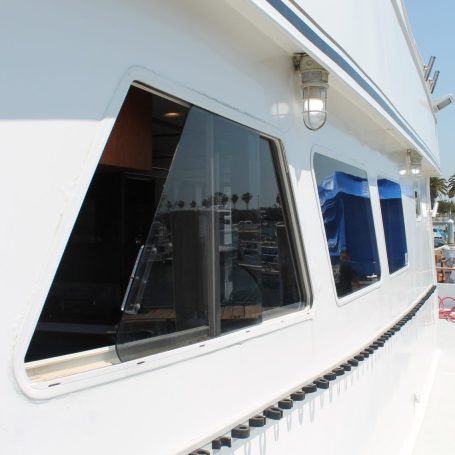
Custom Marine Windows &
Plastics Forming
!! Removable Windows Now Available !!
The development of fiberglass boats has freed the yachtsman of much of the care and maintenance previously required for his yacht. Improvements in the development of marine windows reflect the same advancement. Go industries, founded in 1971 then acquired by Maritech in 2023, is the foremost manufacturer of high-quality, vinyl framed marine windows. With a commitment to offer carefree maintenance, quality, non-corrosive materials and ease of installation, Maritech Industries strives to serve all their customers by producing not only standard, but also custom built marine windows. We are looking for pictures of our windows in your sail or power boat. If you would like them featured on our website, please email them to [email protected] with a brief description of the vessel!
Unique patented design.
Maritech windows are manufactured using a white, high impact weather resistant vinyl plastic frame. Rigid vinyl can withstand most chemicals that are used by a yachtsman on his boat, including paint thinner and acetone. The vinyl frame, when used with plastic panes, will conform easily to curved cabin sides. The most important advantage of all is no corrosion.
EASY TO INSTALL
Installation of maritech windows was designed with the yacht owner in mind. the windows install using the “clamp” method as illustrated in the drawings below. both the outer frame, which holds the pane material, and the inner trim ring come pre-drilled and the necessary stainless fastening screws are provided. after the old windows are removed, and the cabin side is cleaned of all impurities, simply apply a quality sealing compound to the inside of the exterior frame and place the window in the cut-out. the interior trim ring is then screwed in place and the installation is complete..
Four Basic Types
Fixed - Maritech Industries has the capability to manufacture almost any shape or size window. Fixed windows are available with our standard heavy duty frame. The standard frame can have a 1 -1/2", 1- 7/8", 2-1/2", 3", 4" and/or 6" corner radius as well as mitered corners. The heavy duty frame is available with a 2-1/2” or 4-1/2” radius, or with mitered corners.
Sliding -Sliding windows have a number of unique features that are available only with Maritech windows. With plastic pane windows (Lucite S.A.R.), the handle used to slide the window open and closed are glued as well as screwed on to assure that they will not come off. Large drain holes are provided on the outside. Plus a “splash guard” , which is clear plastic strip , is glued on the inside. These two features work together to make Maritech sliding windows one of the most leak-proof windows available. Standard frame sliding windows come in 1-7/8” , 2-1/2" , 3” or 4"radius, and/or mitered corners. Heavy frame sliding windows are available with a 2-1/2” or 4-1/2” radius, or mitered corners.
Custom radiuses are available upon request.
Hinged - Ventilation has always been a problem on most power boats. Maritech Industries has the answer to this in the form of a hinged windshield. Like all Maritech windows, the hinged window can be made to almost any shape or size with the use of our unique vinyl frame. All hinged windows use high quality stainless steel wind-shield adjusters to hold the hinged pane open in any position. When closed, screw down dogs are used to make a water-tight seal.
! NEW RELEASE !
Removeable - We are currently working with USCG to satisfy new egress requirements for inspected vessels. In most cases we are able to make either a sliding, hinged or removable window with latches or tension knobs in place of an existing fixed window! Contact us for more info!
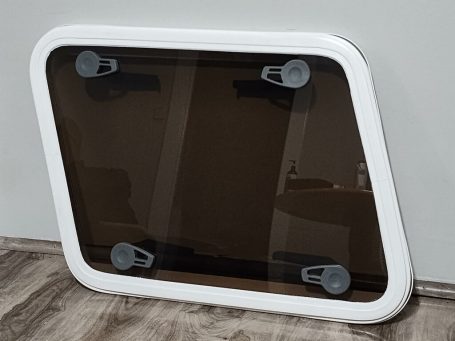
Removable with latch handle
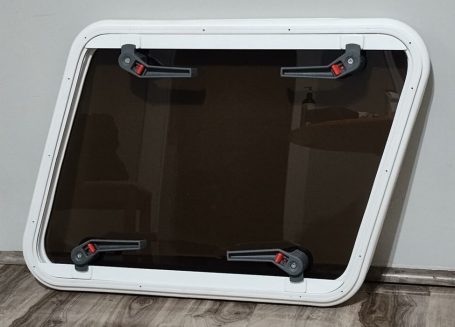
Removable with tension knobs
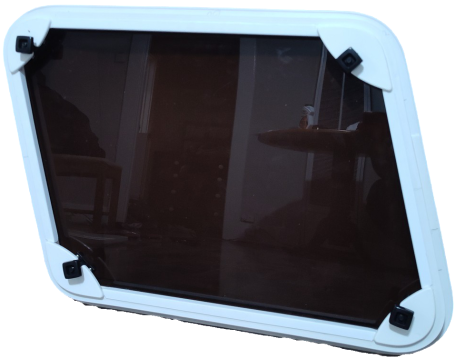
Choice Of Pane Material
Maritech windows can be made with panes of plexiglass, Lucite S.A.R. (super abrasion resistant), tempered glass, or upon special request, Lexan Margard. All are avail-able in various tint colors as well as clear. One of our design engineers can assist in the pane and thickness choice best for your particular needs.
Many Standard Configurations
Since Maritech windows have been the choice of various manufacturers as standard equipment, we have many production patterns in stock. When requesting a quotation, please give us the boat type and length as well as the “block” dimensions so that we can check your windows against our patterns. Because Maritech Industries makes windows as they are ordered, changing the size of your existing windows can be done at little to no extra cost.
Very friendly and informative , estimate and turn around time were exactly as they said, after sending a template , the two windows i ordered installed effortlessly and fit perfectly, I should also mention pricing was more reasonable than 4 other manufactures i spoke with for same product
Cannot believe anyone has not yelped this business yet. I have an old US Yachts boat. The original window maker went out of business but somehow that business found its way to Mark Plastics. I dealt directly with Mark I had just a small single window but you would have thought I was placing a huge order. Mark spent a ton of time with me on the phone, walked me through what he needed and built me a replacement boat window within a week. Absolutely fabulous and a big shoutout to San Francisco Boat Works for steering me to Mark Plastics.
Mark at Mark Plastics is great! I'm about to place my third order with him, which will be the final batch needed to replace all ports in my old 1976 Islander 36. The new ports were a perfect fit, which was a big relief as I had to lug them on an international flight. Mark's office is low-tech - best to call and leave a message. He always calls back.
Love the new windows and nice to be able to see through the windows now! (old plastic window were crazed and with the sun on them it was like having shades pulled down)! The color tint is perfect! The windows went in easy with just a bit of trimming! The opening galley window sure helps remove the moisture while cooking. Many Thanks for a job well done!! Duane Sheehan
December 2023

© Copyright. All rights reserved.
Legal Notice | Privacy Policy
We need your consent to load the translations
We use a third-party service to translate the website content that may collect data about your activity. Please review the details and accept the service to view the translations.
This site uses third-party website tracking technologies to provide and continually improve our services, and to display advertisements according to users’ interests. I agree and may revoke or change my consent at any time with effect for the future. More
Website Translator
Youtube video, privacy settings.
This tool helps you to select and deactivate various tags / trackers / analytic tools used on this website.
Select all services

CatalinaOnly.com
Video how to replace your boat windows for catalina sailboats.
Now offering acrylic retrofit windows for Catalina’s 22’s, 25’s, 27’s, 28’s, 30’s, 34’s, 36’s and 42’s with recessed frames (no aluminum frames). These models date from about 1986-1987 and require only the exterior windows. All of our kits are perfect for sailboat upgrades or replacements of existing contemporary installations …. MORE
PHOTO GALLERIES
Catalina Companionway Doors Catalina Cockpit Tables Catalina Interior Tables Companionway Doors Replacement Boat Doors Boat Doors in the Shop Pictures Boat Door Hardware Pictures Yacht Tables Show Case Yacht Tables Show Room Interior Boat Tables Inlays Pedestal Boat Tables Binnacle Tables Transom & Deck Dining Table Hardware

Dr. Teak’s Blog
More dr teak beneteau love . boat flooring . boat shows . catalina mine . current events . customer props . faq finishing . installation notes . island packeting . ladder all . picture this . sale . shout out . table talk . teak to me . the doors . they’re inlays . tongue & groove . uncategorized . window shopping . wood care, more information.
CruisingConcepts.com Companionway Doors CruisingConcepts.net TeakConcepts.com Starboarddoors.com CockpitTables.com CatalinaOnly.com YachtTables.com Boardingladders.us YachtEntertainmentSystem.com
Cruising Concepts DIY Videos
All Videos Video: Cruising Concepts Catalina Hatch Upgrade Video: Cruising Concepts Testimonials Video: How to upgrade to a Beckson Port on your boat Video: Cruising Concepts Cockpit Table and Cup / Binocular Holder Installation Video: How to do a Hatch Upgrade Retrofit on your boat V ideo: How to measure companionway doors for your boat

Technical Specifications and Diagrams
Cockpit Tables IP Island Packet Cockpit Table Teak Adapter Installation Instructions Cockpit Tables Pedestal Throttle Shift Lever Casing Inf0: Yacht Specialties Whitworth Catalina Hunter and Others
Aluminum Frame Boat Windows Boat Window Installation Specs Catalina 30 & 38 Aluminum Flange Measurement Diagram Recessed Frameless Boat Windows Catalina Recessed Boat Window Installation Catalina 30 34 36 42 Configuration Check (1987 – 1992)
[email protected] Hosting by Orcas Web Website design by Orcas Web Design
Catalina Interior Tables Catalina 30 Interior Table Installation Instructions Catalina 30 Interior Table Pedestal Diagram Companionway Doors Benetau Companionway Door Measurement Instructions Hunter Companionway Doors Catalina Companionway Doors Companionway Doors Measurement Diagram Interior Tables for Boats Configuration Diagrams

© 2019 Cruising Concepts. All rights reserved.

- Description
- Testimonials

Welcome to Waterway Systems
Marine windows, boat windshields, center console windscreens. .
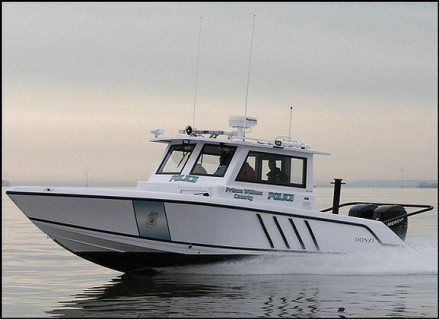
Marine Windows, Boat Windshields, Center Console Windscreens. Custom manufactured for your restoration or new boatbuilding project.
Building quality marine windows for private and commercial fishing vessel, houseboat, specialty barge, ships, and yachts..
Since 1977 Waterway Systems has been engineering and manufacturing the finest window units available.
Fabricated in Florida, shipped USA and Internationally.
Custom Acrylic / Plexiglass Parts. Center Console Windscreens, Dash Panels, Livewell Lids, Flybridge Windscreens, Hatches. CNC Plastic Machining
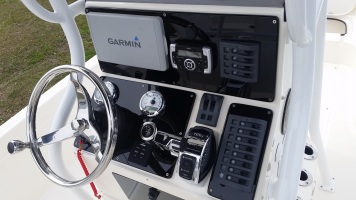
Waterway Systems
7010 28th ST CT E
Sarasota, FL 34243
941-779-4709
Web View Mobile View
Visit our Popular Forums
- Monohull Sailboats
- Multihull Sailboats
- Powered Boats
- General Sailing
- Antares Yachts
- Fountaine Pajot
- Lagoon Catamarans
Cruising Business
- Boat Classifieds
- General Classifieds
- Crew Positions
- Commercial Posts
- Vendor Spotlight
Life Aboard a Boat
- Provisioning: Food & Drink
- Families, Kids, & Pets Afloat
- Recreation, Entertainment, & Fun
- Boat Ownership & Making a Living
- Liveaboard's Forum
Seamanship, Navigation & Boat Handling
- Seamanship & Boat Handling
- Training, Licensing, & Certification
- Health, Safety, & Related Gear
- Rules of the Road, Regulations, & Red Tape
Engineering & Systems
- Const. / Maint. / Refit
- Product / Service Reviews
- Electronics: Comms / AV
- Electrical: Batts / Gen / Solar
- Lithium Power Systems
- Engines & Propulsion
- Propellers & Drive Systems
- Plumbing / Fixtures
- Deck Hdw: Rigging / Sails
- Aux. Equipment & Dinghy
- Anchoring & Mooring
Photo Categories
- Member Galleries
- Life Onboard
- Sailing in the Wind
- Power Boats
- Cruising Destinations
- Maint. & Boat Building
- Marine Life
- Scuba Diving & Divers
- General Photos
Recent Photos

Listing Categories
- African Cats
- view more »
- Crew Wanted
- Crew Available
- Enhance Your Account
- Meet the Mods
- Meet the Advisors
- Signup for The Daily Cruiser Email

| ||||||||||||||||||||||||||||||||||||||||||||||||||||||||||||||||||||||||||||||||||||||||||||||||||||||||||||||||||||||||||||||||||||||||||||||||||||||||||||||||||||||||||












































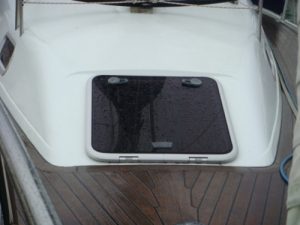



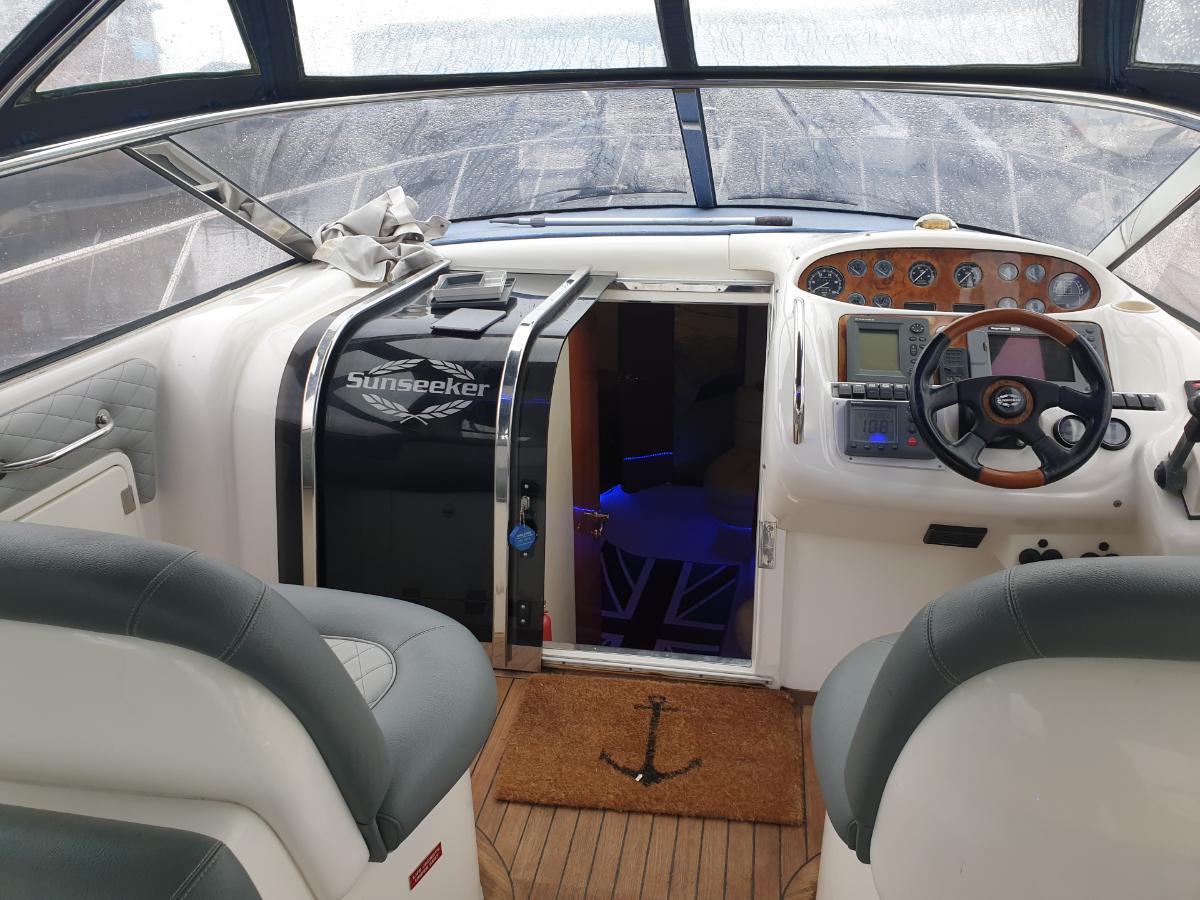

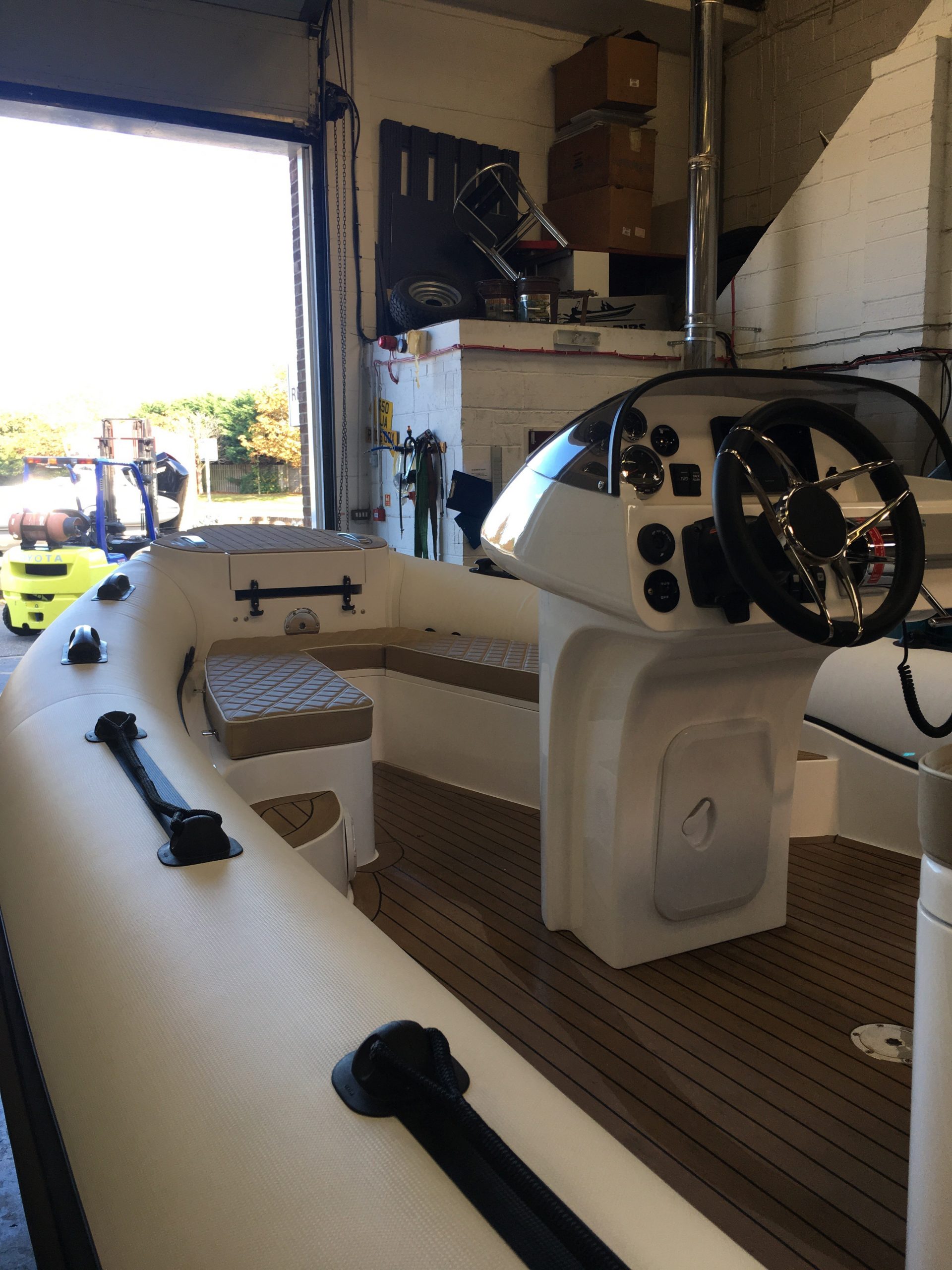

IMAGES
VIDEO
COMMENTS
Here's a quick look at the most popular marine window materials on the market today: Vinyl and Polyester Composite: An excellent composite material, vinyl and polyester composite fabrics offers the flexibility you need to curve and bend along a boat's contours easily. Fabrics made using this composite stay tight against the frame and ...
We sell 3 types of clear vinyl for boat windows, Strataglass, Crystal Clear 2020 and roll vinyl, at great prices perfect for your boat or marine canvas job. ... Repair Tape; Rings; Shackles; ... Sale Hardware; Sale Finished Products; Window Material. We sell 3 types of clear vinyl window material. Our "roll vinyl" is least expensive but ...
This is one of the most commonly used materials in marine applications, for reasons that will be explained further. Glass: This is a bit closer to windows in homes that people are more familiar with. It's another popular choice for use on custom boat windshields, mainly due to their versatility. Polycarbonate: This is made from a semi-rigid ...
5. Cal 33-2 RKYC. May 26, 2023. #1. I'm looking for some advice on installation for new cabin windows. I think I know what I'm doing but wanted a pulse check to avoid any messy and timely rework. Complete: I've removed my old cabin windows (frameless). Cleaned up the old windows to use as templates for the new acrylic.
Per Window, approx 8-10 hours: 1-2 hrs: Remove ~30 thru-bolts and pry off old acrylic. 4 hrs: Scrape, sand and prep window frame in hull. Clean with a degreaser (ex, acetone) and then 50/50 isopropyl alcohol (IPA) / water mix. This included about 1 hr/window for epoxy repairs to damaged gel coat.
The most common materials used for boat windows are: Acrylic (Plexiglass): Acrylic is a popular choice for boat windows due to its lightweight, durable, and UV-resistant properties. It is also relatively easy to work with and can be cut and shaped to fit your boat's window openings. ... Tips for a Successful Window Replacement. Take your time ...
from$420.00. Universal Curved Glass Boat Windshield Repair. 32 reviews. from$310.00. Stratos Plexiglass Acrylic Boat Windshield Repair Replacement. 32 reviews. from$210.00. Princecraft RESORTER Plexiglass Acrylic Boat Windshield Repair. 32 reviews.
Go industries, founded in 1971 then acquired by Maritech in 2023, is the foremost manufacturer of high-quality, vinyl framed marine windows. With a commitment to offer carefree maintenance, quality, non-corrosive materials and ease of installation, Maritech Industries strives to serve all their customers by producing not only standard, but also ...
But Motion Windows provides a better window in about half the time: only 7 or 8 weeks after you order them. Talk to us about your boat windshield requirements (360) 944-4446. Boat Windows is the most trusted name for boat windshields. We custom-manufacture boat windshield replacement. Customize your boat windshield today!
The right kind of materials must be used in your boat's window glass. When buying windows, inspect each piece and ask about the materials used. You also have to do your own research on the right materials so you'll have an idea which works best. The right finishing gives your boat's windows the best protection to improve its clarity.
VideoHow to replace your Boat Windows for Catalina Sailboats. Now offering acrylic retrofit windows for Catalina's 22's, 25's, 27's, 28's, 30's, 34's, 36's and 42's with recessed frames (no aluminum frames). These models date from about 1986-1987 and require only the exterior windows. All of our kits are perfect for sailboat ...
Fabricated in Florida, shipped USA and Internationally. Custom Acrylic / Plexiglass Parts. Center Console Windscreens, Dash Panels, Livewell Lids, Flybridge Windscreens, Hatches. CNC Plastic Machining. Waterway Systems has been manufacturing marine windows for over thirty years. Custom new and replacement boat windows for all types of vessels.
From introducing the first curved-glass windshield to the marine market, to the inventive construction of our sleek, aerodynamically designed glass surfaces — when it comes to boating windshields, framing, and replacement accessories and components, Taylor Made's capabilities are second to none. Leveraging decades of hands-on experience and ...
I'd go with a heavy duty set of Acrylic windows bonded in place. And then, on the cabin, above & below the windows, glue on a nice wide, solid strip of G10. To which (clear) storm windows/shutters would be bolted most of the time. Likely some thick Polycarb, possibly with sacrificial, peel off layers of clear "tape", or a thin layer of Acrylic ...
Two plastics are suitable for boat windshield replacement: . Acrylic sheet is the cheaper of the two while polycarbonate is the best choice if the window must be strong and impact resistant above all else. Bear in mind that with polycarbonate, the tint will be darker with the thicker sheets. Both acrylic sheet and polycarbonate are available in ...
All major hatch, portlight and window manufacturers use Acrylic in offshore / bluewater marine products. Acrylic is more scratch resistant than standard (9034) polycarbonate. Acrylic is significantly more durable when exposed to Ultra Violet radiation (sunlight). Acrylic is less expensive than Polycarbonate.
Harbor Shoppers offers Best Boat replacement window, Sailboat Window Online. 1 (800) 484-0367. Register; ... The boat windows are considered to be unbreakable and are available from many high quality boat windows suppliers. This material offers the user more visibility and it is such a clear option compared to other types of plastics. It can ...
TO ORDER YOUR CATALINA RETROFIT WINDOWS. CALL: 800.899.3996 | Contact Us | Pricing. How to Order Cruising Concepts accepts orders via email at [email protected] and by phone at 800.899.3996. Please include a detailed description of your vessel. Custom designs can be discussed directly via phone call.
Mar 28, 2010. #1. Hi, I am seeking advice for best material to replace cabin windows on my older C&C--Plastic (lexan), tempered glass, or regular glass? I discovered cracks in my cabin windows. The windows are contained in the older style screw on aluminum window frames (25x7). I have removed one window for which I discovered is plastic.
Until we see your window in person no price quoted is binding. After we see your window and we give you a price we will not change the price. Bell Plastics makes boat windows replacement hatch covers, windshields for motorcycles, airplanes from acrylic & polycarbonate Hayward, CA 510-784-1111.
Our moisture resistant marine mirror. If you have any questions about our marine fabrications please contat us at [email protected]. ACRYLIC - Trade names Perspex, Plexiglas, Altuglas etc. Available in. clear 2mm - 50mm. tints 3mm - 15mm. Used mainly for windows, hatches, washboards & screens. 10 year warranty.
Boat Windows is a leading source of window replacement parts for boats, including glass, window, screen, and installation parts. Order today!
Glazing Materials -- Introduction. When replacing boat windows, you can choose from three glazing materials: polycarbonate (Lexan), acrylic (Plexiglas), and tempered glass. The windows on offshore boats vary from between 5/16 inch to 3/8 inch thick. As a point of reference, the large pilot house windows on a Nordhavn 43 are 10mm (about 3/8 inch ...